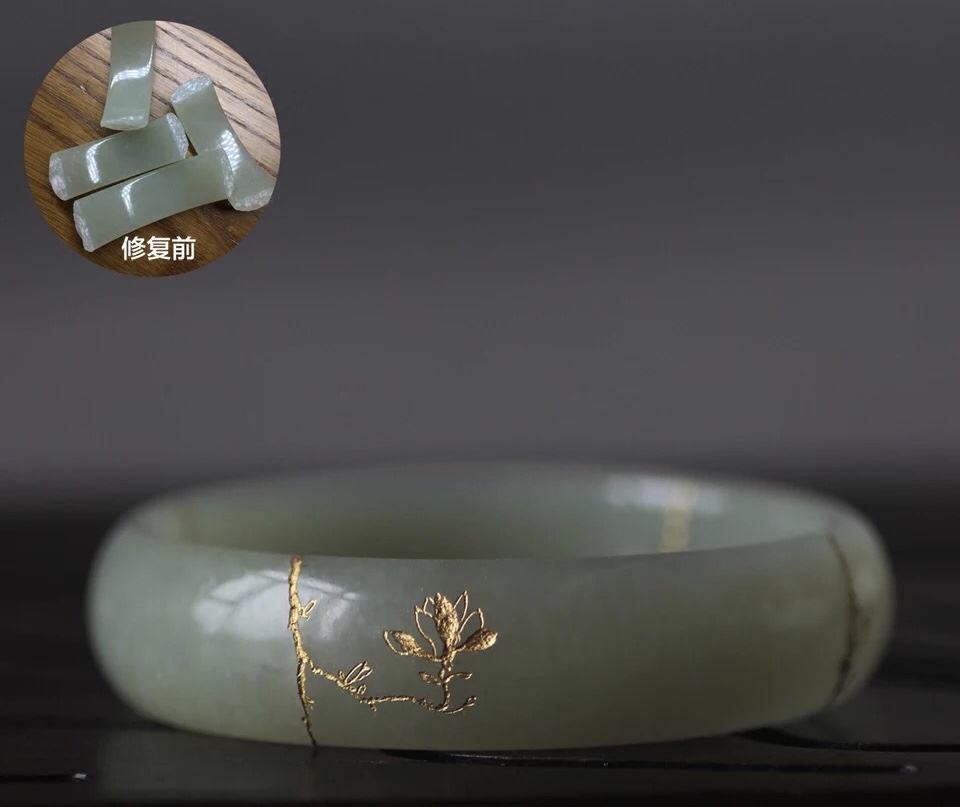
Ancient artifacts rarely stand the test of time. Over the centuries, many have been reduced to fragments. Chipped, broken or smashed, their shards provide a challenge to restorers who, like detectives, have to piece together the evidence of their former glory.
Carrying out seamless repairs to ceramics, pottery or wooden artifacts from the ancient world requires superb craftsmanship, a sure and delicate touch, and abundant patience.
Being a cultural restorer is time-consuming and requires demanding precision. For such a task, Tang Jie, 26, seems young but has been doing the painstaking work since she was a teenager.
Her love for cultural relics was influenced by her grandfather, a fervent antique collector, who used to take her, as a child, to antique shops and flea markets to hunt out curios.

"Since I was young, I played with porcelain vases, pottery bottles and other antique objects, which were just like toys to me," recalls Tang of her unique childhood experiences. "The fascinating background stories of antique collections told by my grandfather and his friends motivated me to dig out more information about each object."
On her own initiative, she gradually learned to identify ancient artifacts by observing the decoration, materials and shapes. She also scoured building sites for ceramic or pottery pieces that may have been unearthed by the excavations. Then she would try to gauge their age and asked her grandfather if her findings were right.
"If I heard the answer 'yes', I would be very pleased," she recalls, adding that her grandfather noticed her talent for identifying and valuing antiques and decided to further cultivate her ability.

At 14, she left her hometown in Ningde, Fujian province, and went to study as an apprentice under Ye Jianfei, a friend of her grandfather. Ye was an established relic restorer at a research institute in Nanjing, Jiangsu province. There she learned the skills of the trade, delicately cleaning and sorting out unearthed relics and piecing them together.
Her long school holidays allowed her the time at the institute to master the required craftsmanship. She admits that she "felt a sense of responsibility to pass down cultural treasures".
After five years at the institute, Tang had grasped the necessary skills and she became qualified enough to restore valuable items that would go under the hammer at auctions.
"I was then determined to create artworks in my own way," she says.

Restoring led her to become more inquisitive to the creativity process.
In 2013, she enrolled in the art and design department of the Fuzhou University of International Studies and Trade majoring in animation design. She was able to consolidate her skills in painting and design as well as improve her 3D modeling abilities. In the same year, she also began to learn Shoushan Stone carving as an apprentice under artist Liu Beishan in Fuzhou, Fujian province.
Crucially, she got to grips with a technique called jinshan (literally golden repair). This involves gluing shattered pieces of artifacts together with natural materials, including lacquer, powdered gold, silver or platinum.
Tang combines the age-old technique with stone carving skills to make sculptured artworks which were later glued onto the broken artifacts. She then uses powdered gold to color the cracks. Once completed, it looks, well, as good as new.
As Tang acquired a growing reputation as a restorer, she opened a studio under her own name, and began to organize workshops to train young people to master the trade skills. There are now 38 cultural relic restorers working at the studio.

They restore ancient cultural relics, and objects for exhibitions and displays, as well as for individual customers.
Making the trade more sustainable and attractive was her long-term goal, and later she found a solution after a request from a friend, who asked Tang to help their octogenarian mother to fix a jade bracelet.
This had enormous sentimental value and the elderly woman wrapped the three broken pieces of the bracelet-a gift from her deceased husband-in multiple layers and insisted on walking to Tang's studio to deliver it in person.
After that, she expanded her target group to repair "ordinary" items, including jadeware, teapots and glass ornaments.
"The warm stories shared by these owners touched me deeply," she says.
"Restorers often deal with items from ancient times, but I hope that restoration craftsmanship can become more connected with our daily lives in the modern world."